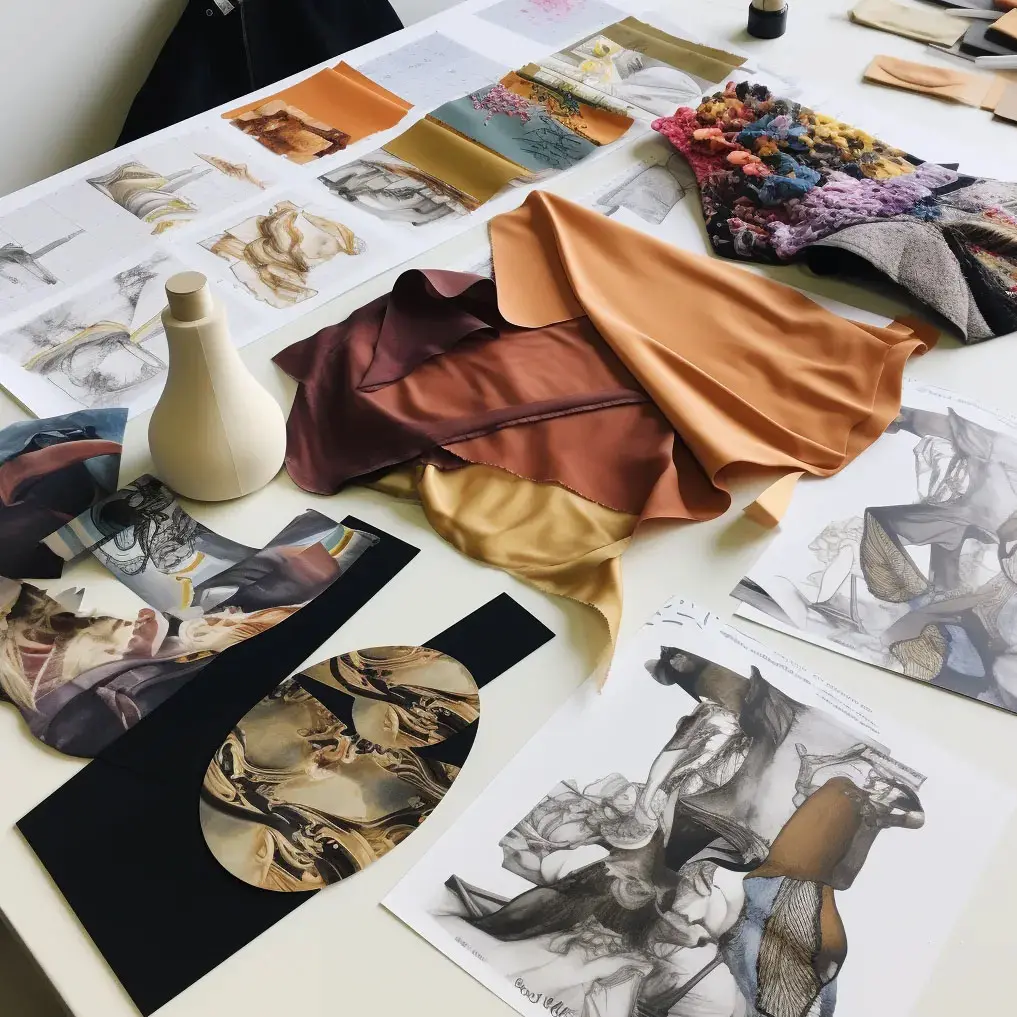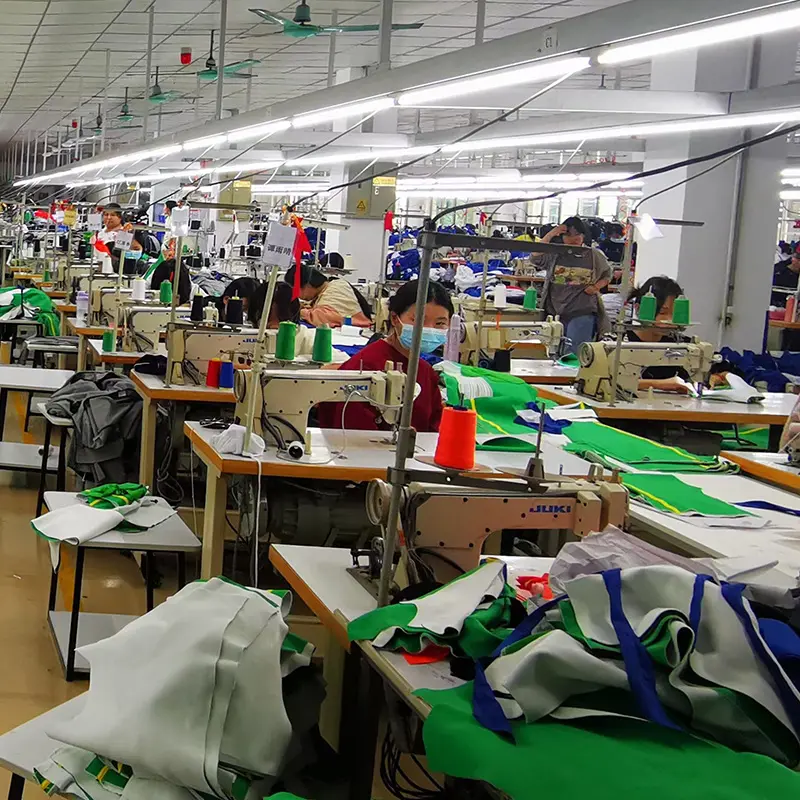
Make Your Own Clothing Line: A Comprehensive Guide to Starting a Successful Fashion Brand
- Clothing uses environmentally friendly materials, reduces waste and adheres to fair trade principles.
- Provide competitive clothing prices while maintaining profitability.
- Garment production efficiency is high, the output is 300k/ month.
- Tailor clothing to your requirements.
- 30 years of experience in garment development and production.
- One-stop solution and simplified communication.
- Quote quickly.
Table of Contents
Section 1: Understanding the Fashion Industry
Market Research and Identifying Your Niche
Analyzing Competitors and Trends
Defining Your Brand Identity
Before diving into starting your clothing line, it’s essential to understand the fashion industry landscape. Conducting thorough market research will help you identify gaps in the market, define your target audience, and differentiate your brand from competitors. Keep an eye on emerging trends and analyze successful fashion brands within your niche to gain inspiration while crafting your unique brand identity.

Section 2: Planning Your Clothing Line
Developing a Business Plan
Setting Realistic Goals and Objectives
Creating a Budget and Financing Options
A well-structured business plan will serve as your roadmap to success. It should outline your mission, vision, and goals, along with detailed financial projections and marketing strategies. Determine your startup costs, production expenses, and pricing models. Explore possible funding options such as personal savings, loans, or investors.

Section 3: Designing Your Collection
Sketching and Concept Development
Fabric Selection and Sourcing
Tech Packs and Sample Making
Designing an appealing and cohesive collection is a core aspect of your clothing line. Start by sketching your ideas, refining them, and creating mood boards that capture your desired aesthetics. Select fabrics that align with your design vision and source them from trusted suppliers. Develop comprehensive tech packs to communicate your designs effectively to manufacturers, ensuring accurate sample creation.

Section 4: Finding Manufacturers and Suppliers
Working with Private Label Clothing Manufacturers
Researching Domestic and International Suppliers
Evaluating Quality, Pricing, and Production Capacities
Collaborating with the right clothing manufacturer is crucial for the success of your brand. Research private label clothing manufacturers who can produce your designs with high quality and consistency. Consider factors like their specialization, production capacities, lead times, and cost-effectiveness. Evaluate domestic and international suppliers for sourcing fabrics and other necessary materials.

Section 5: Building Your Brand
Brand Naming and Trademark Considerations
Logo Design and Branding Elements
Developing a Strong Online Presence
Building a memorable and recognizable brand is key to standing out in a crowded market. Choose an appealing name that reflects your brand’s personality and values. Design a distinctive logo and create branding elements such as color schemes, typography, and imagery. Establish a strong online presence by developing a user-friendly website and leveraging social media platforms to engage with your target audience.

Section 6: Manufacturing and Production
Preparing for Production
Establishing Quality Control Processes
Managing Inventory and Supply Chain
Prepare for production by finalizing the technical details of your designs, including size ranges and grading. Implement quality control processes to maintain consistent product standards. Manage your inventory efficiently and establish a streamlined supply chain to ensure timely deliveries and avoid stock shortages or excesses.

Section 7: Marketing and Promoting Your Brand
Creating a Marketing Strategy
Social Media and Influencer Marketing
Collaborations and Events
Craft an effective marketing strategy to raise awareness and generate buzz around your clothing line. Utilize social media platforms, influencer collaborations, and content strategies to reach your target audience. Participate in fashion events, collaborate with bloggers or influencers, and leverage partnerships to expand your reach.

Section 8: Sales and Distribution Channels
E-commerce Platforms and Website Development
Wholesale and Retail Strategies
Consignment and Pop-Up Stores
Developing a strong online presence is crucial for selling your clothing line. Create an e-commerce platform that showcases your products and offers a convenient shopping experience. Explore wholesale opportunities by approaching boutiques or retailers interested in carrying your brand.

Section 9: Scaling Your Clothing Line
Analyzing Sales Data and Consumer Feedback
Expanding Product Range and Collections
Seeking Funding for Growth
As your clothing line gains traction and builds a loyal customer base, you may consider expanding your product range and collections. Analyze sales data and gather feedback from customers to understand their preferences and make informed decisions on introducing new designs or variations. Seek funding options such as loans, investments, or partnerships to support your growth plans.

Section 10: Legal Considerations
Business Registration and Licensing
Trademarks, Copyrights, and Intellectual Property Protection
Compliance with Regulations and Standards
Ensure that your business operates legally and ethically by addressing various legal considerations. Register your business and obtain any necessary licenses or permits required for operating in your jurisdiction. Protect your brand identity by trademarking your name, logo, and designs. Familiarize yourself with industry regulations and standards related to manufacturing, labeling, and safety compliance.

Embarking on the journey of starting your own clothing line can be challenging yet rewarding. By following these guidelines, you will have a solid foundation to build upon. Remember to stay true to your unique vision, adapt to market trends, and continuously engage with your target audience. With dedication, creativity, and perseverance, you can turn your clothing line dreams into reality.
Take the first step today and make your fashion brand a reality. Start researching, planning, and creating to bring your designs to life. With meticulous attention to detail, smart business strategies, and a passion for fashion, success is within your reach. Good luck on your entrepreneurial journey in the world of fashion!
If you require further assistance or guidance, feel free to reach out to Ninghow Apparel, a trusted partner and private label clothing manufacturer ready to help you throughout your clothing line creation process.
Frequently Asked Questions about Starting a Clothing Line
Creating your own brand of clothing involves several key steps:
- Develop a clear vision and unique identity for your brand.
- Conduct market research to understand your target audience and identify your niche.
- Design your clothing line, including sketches, fabric selection, and sample making.
- Find reliable manufacturers or suppliers, like Ninghow Apparel, who specialize in private label clothing manufacturing.
- Build your brand by creating a strong online presence, designing a logo, and implementing effective marketing strategies.
The cost of making a clothing line depends on various factors, such as the number of designs, materials selected, manufacturing processes, and branding needs. Costs may include fabric sourcing, sample making, production, packaging, marketing, and more. It is essential to create a detailed budget and work closely with your manufacturing partner to get accurate cost estimates tailored to your specific requirements.
The number of designs needed to start a clothing line varies depending on your business strategy and target market. It is recommended to start with a small collection of 10-15 cohesive designs representing your brand’s aesthetic. Focus on quality over quantity initially, and gradually expand your collection as your brand grows.
To start a clothing brand, consider the following steps:
- Research the fashion industry and identify your target market.
- Develop a clear brand concept, mission, and values.
- Create a business plan, including financial projections and marketing strategies.
- Design your clothing line based on your target audience’s preferences and trends.
- Find a reliable manufacturer, such as Ninghow Apparel, who offers private label clothing manufacturing.
- Build your brand identity through branding, online presence, and effective marketing approaches.
Starting a clothing line involves the following key steps:
- Determine your niche and identify your unique selling points.
- Conduct market research to understand the current trends and demands.
- Create a business plan that outlines your objectives, target market, and financials.
- Design your collection, considering aesthetics, materials, and functionality.
- Find trustworthy manufacturers or suppliers who can produce your designs.
- Develop marketing strategies to promote your clothing line effectively.
To start your own clothing brand, consider the following steps:
- Research the fashion industry and identify your niche.
- Determine your brand’s unique identity and positioning.
- Create a business plan with clear goals and a marketing strategy.
- Design your clothing line, focusing on quality, style, and your target audience’s preferences.
- Partner with a professional manufacturer like Ninghow Apparel to bring your designs to life.
- Establish an online presence, build brand loyalty, and market your products effectively.
Starting a clothing brand online requires a combination of creativity and strategic planning. Here are some steps to consider:
- Define your brand’s identity and target market.
- Choose a unique brand name and register a domain for your website.
- Build an e-commerce website or use established platforms like Shopify to sell your products online.
- Develop a visually appealing website design and optimize it for a seamless user experience.
- Implement digital marketing strategies such as social media marketing, search engine optimization, and influencer collaborations to drive traffic and sales.
Starting a clothing line with no prior experience can be challenging but not impossible. Consider these steps:
- Educate yourself about the fashion industry and learn from available resources and courses.
- Collaborate with experienced professionals or consultants who can guide you through the process.
- Thoroughly research and understand your target market to identify trends and preferences.
- Start small with a limited collection and focus on building a strong brand identity and quality products.
- Partner with reliable suppliers and manufacturers who have expertise in private label clothing manufacturing.
- Network with industry professionals, attend trade shows or fashion events to gain exposure and learn from others’ experiences.
